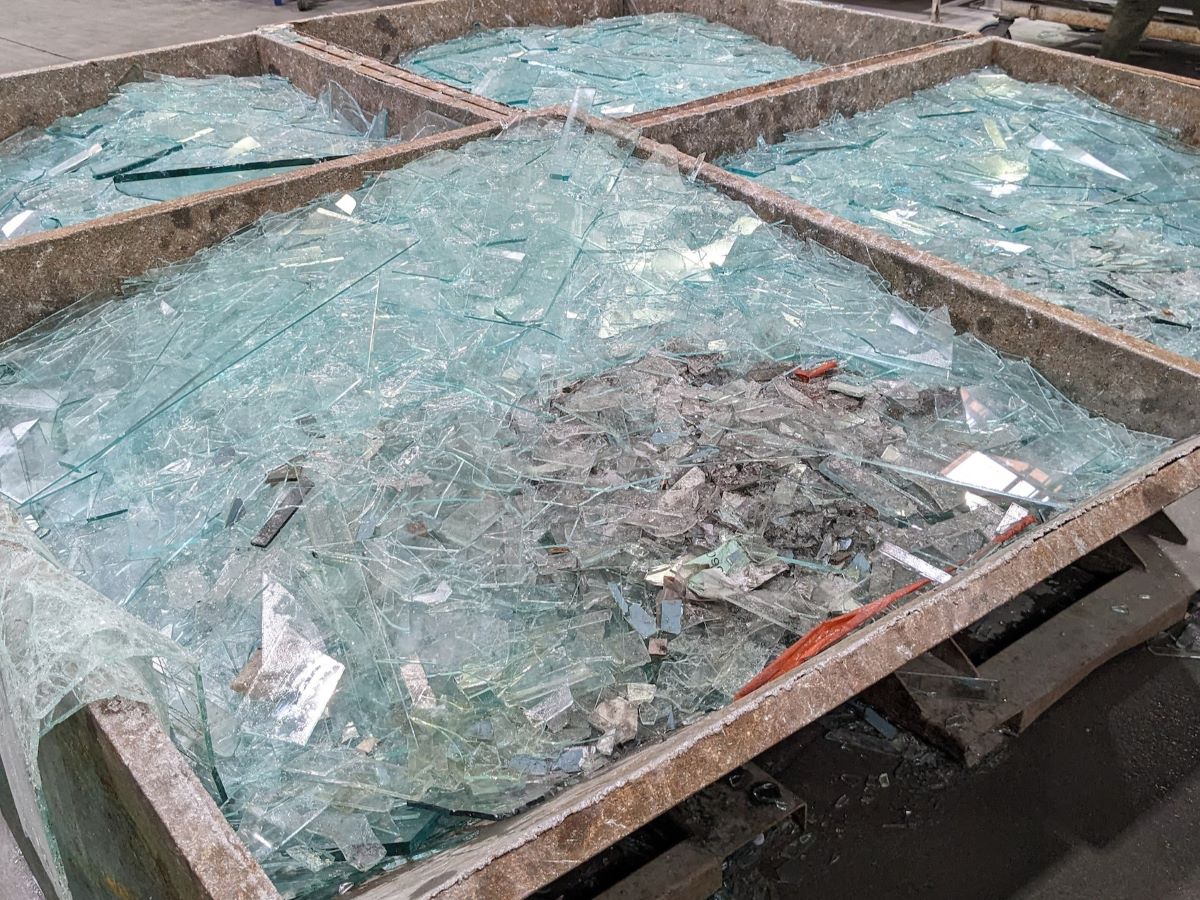Vinyl and Glass Recycling Is a Part of Sustainability
Recent regulatory oversight of material transparency underlines a need for raw material recycling

In recent years, regulatory bodies have shown more interest in building material sustainability, material transparency and now, recyclability. Window and door manufacturers and organizations are working to create guidelines that those across the industry can use to comply with increasingly stringent requirements.
Improving material transparency, recycling
The current version of Leadership in Energy and Environmental Design, or LEED—the sustainability certification program created by the United States Green Building Council—requires Environmental Product Declarations for building materials. These EPDs, sometimes referred to as a “nutrition label” for products, provide a means for manufacturers to measure the environmental impact of their manufactured product in terms of carbon emissions through a third-party verified Life Cycle Assessment, or LCA. This report of the LCA’s measurement is the EPD.
The stakes are increasingly high to create EPDs, says Kevin Seiling, vice president of engineering new business development at Veka. Speaking to Window + Door’s Editor Laurie Cowin at GlassBuild, Seiling says that while EPDs are required by LEED in the U.S., the International Green Construction Code also increasingly uses LEED standards, and state and city governments in the U.S. are rolling out their own requirements for transparency. As a result, “it’s in everyone’s best interest to consider EPDs for their products,” he says.
Post-consumer recycled vinyl can improve EPDs
Another increasingly important part of sustainability is recycling. Seiling explains that LEED incentivizes manufacturing companies to use more recycled content as it improves carbon footprint. “If you’re in the LEED program or you have an EPD, and you add post-consumer recycled content, in LEED version 5 you get credit for it,” he says. He further notes that LCAs and EPDs receive credit for post-consumer recycling in the form of reduced material usage.
However, the U.S. still produces very little post-consumer recycled vinyl material. Seiling wrote a grant requesting that the Vinyl Institute fund a market study on using vinyl window material that could potentially be recycled. “The results are very encouraging because hundreds of millions of pounds of vinyl windows are coming out of openings,” he says.
Recyclers must also consider the age of the window, says Seiling, because only windows made after 1997 are sure to be lead-free. The operator type of window also factors into determining the amount of material available.
The coalition plans to create a pilot recycling program for post-consumer vinyl material based in the Midwest.
What to know about glass recycling
For those fenestration manufacturers that fabricate glass, there’s a different set of considerations for recycling. Demand for recycled glass material is high, giving scrap glass generators an opportunity to find a better environmental and economic alternative to discarding glass in a landfill.
A wide variety of architectural soda-lime glass products can be recycled. Annealed, tempered and low-emissivity glass can be recycled with virtually no restrictions. Technology has evolved so that historically harder-to-recycle glass products—such as laminated glass, back-painted glass, mixed tints and mirror—have also become routinely recycled.
The glass recycling supply chain begins with a glass fabricator shipping its glass scrap to a recycling facility. The recycler mechanically cleans, crushes and screens the glass to create a uniform material. This material is generally sold in bulk to an end user or manufacturer where it is melted for use in a derivative product, such as glass containers, road grade, fiberglass, reflective highway paint, landscaping products, countertops and coastal restoration materials.
Occasionally, a glass recycler grinds the material to a fine powder to sell for use as a filler or an abrasive. Quality specifications and the value of the recycled glass scrap can vary based on the market, end customers and fabricators.
Finding a recycler, and understanding contaminants
The first step in building a successful recycling program is finding and communicating with a local, knowledgeable glass recycling company. Due to the weight of glass, the proximity between the glass fabricator, the recycler and the end user is important. Glass fabricators can establish a working relationship with the nearest glass recycling company, which can help to lower freight costs and drive the highest value for the recycled material.
Most glass scrap generated by an architectural glass fabricator can be recycled if attention is given to avoiding cross-contamination. Before shipment, fabricators can work with their recycler to define the best way to segregate their scrap to ensure positive value and acceptability.
Glass recyclers can process most contaminants, such as small amounts of metal, aluminum or plastic frames; plastic films; temporary protective film; refractory or rocks; caulk; rubber gaskets; and more. Lead-based paints, desiccants, and hazardous or heavy metal materials are potentially unacceptable contaminants. Mixed-glass compositions like borosilicate and glass ceramic must be segregated out from soda lime glass. It is important to communicate with the glass recycler to understand what types of glass and what levels of contamination are acceptable for recycling.
Resources
